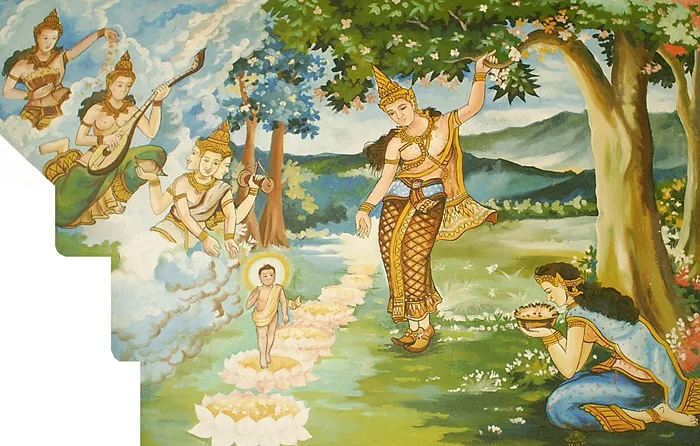Renowned archaeologist Elavara Medananda the Elder has said that a temple site rediscovered in Lumbini, Nepal, will dispel several myths related to the origins of the Buddha.
The Elder expressed his views to our news team on the newly discovered temple site, which could be the oldest Buddhist temple ever found in the world.
It is believed that the ancient temple was built on a sala tree that sheltered Queen Maya when she gave birth to Prince Siddhartha in Lumbini, Nepal.
Prince Siddhartha’s birthplace has been identified Archaeologists excavating at the birthplace of the Buddha have discovered the earliest remains of a “Buddhist shrine”.
They have discovered a 6th century BC wooden structure inside the Mayadevi Temple in Lumbini, Nepal. The shrine appears to have been dedicated to a tree.
This is closely related to the story of the birth of the Buddha – his mother gave birth to him while holding onto a branch. So far, the earliest evidence of Buddhist architecture in Lumbini dates back to the 3rd century BC, during the time of King Ashoka.
To investigate, archaeologists began excavating in the center of the temple—surrounded by meditating monks, nuns and pilgrims. They found a wooden structure with a cavity in the middle and no roof.
Later brick temples built on top of the wooden structure were also arranged around this central space. Raj Somadeva, senior lecturer and professor of archaeology at Sri Lanka’s Graduate School of Archaeology, said the new discovery further confirmed that Gautama Buddha was born in Lumbini.
Archaeologists excavating at the birthplace of the Buddha have found remains of the earliest “Buddhist shrine” ever found. They found a 6th century BC wooden structure inside the Mayadevi Temple in Lumbini, Nepal.
The shrine appears to have contained a tree. This ties in with the story of the Buddha’s birth—his mother gave birth to him by grasping a branch. The discovery could resolve a dispute over the date of the Buddha’s birth, they report in the journal Antiquity.
Thousands of Buddhists make pilgrimages to Lumbini every year—it has long been considered the birthplace of the Buddha, Siddhartha Gautama. The earliest evidence of Buddhist architecture in Lumbini dates back to the 3rd century BC, during the reign of Emperor Ashoka.
To investigate, archaeologists began excavating the heart of the temple, where they found meditating monks, nuns and pilgrims.

